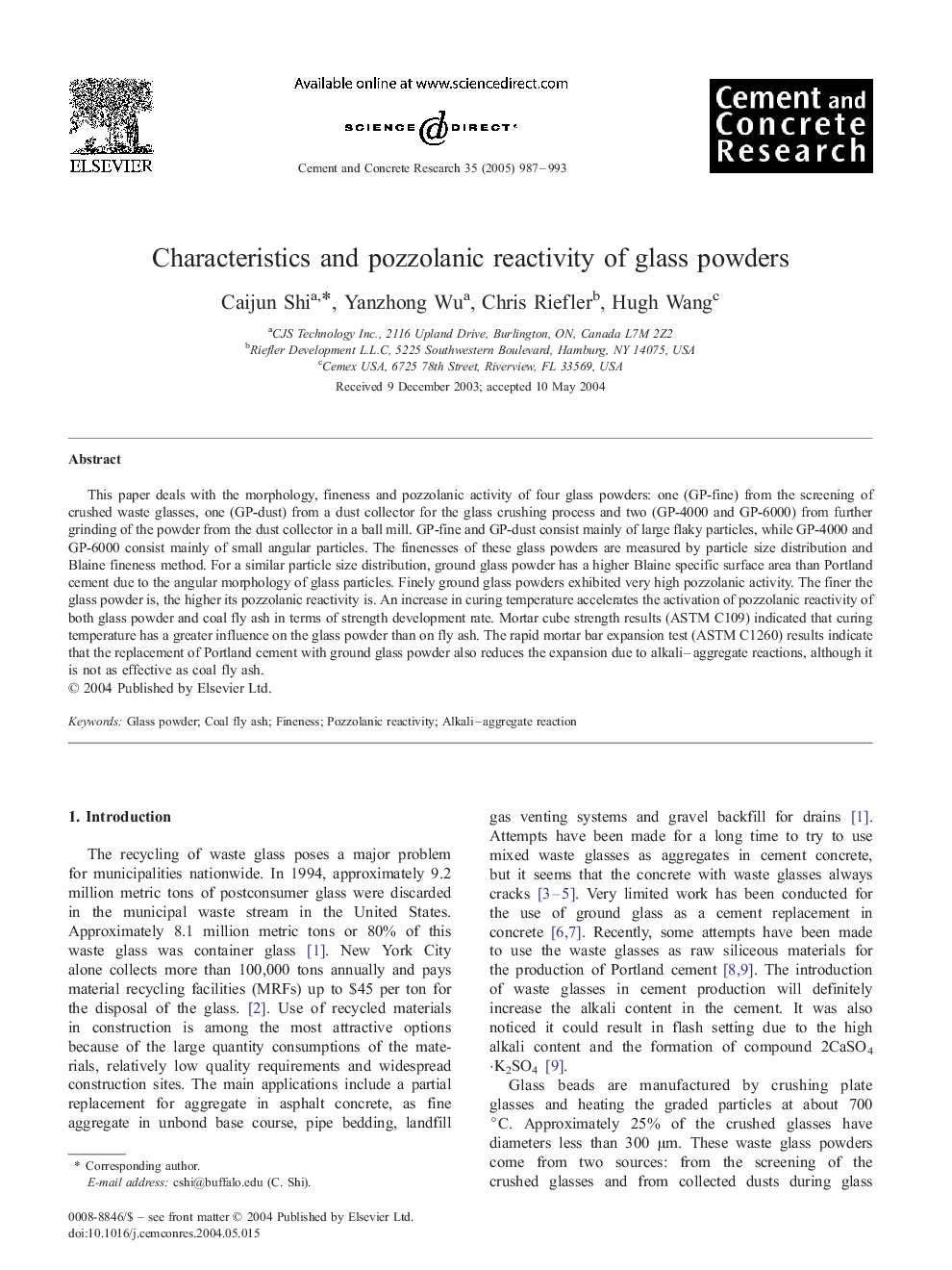| Article ID | Journal | Published Year | Pages | File Type |
|---|---|---|---|---|
| 10622692 | Cement and Concrete Research | 2005 | 7 Pages |
Abstract
This paper deals with the morphology, fineness and pozzolanic activity of four glass powders: one (GP-fine) from the screening of crushed waste glasses, one (GP-dust) from a dust collector for the glass crushing process and two (GP-4000 and GP-6000) from further grinding of the powder from the dust collector in a ball mill. GP-fine and GP-dust consist mainly of large flaky particles, while GP-4000 and GP-6000 consist mainly of small angular particles. The finenesses of these glass powders are measured by particle size distribution and Blaine fineness method. For a similar particle size distribution, ground glass powder has a higher Blaine specific surface area than Portland cement due to the angular morphology of glass particles. Finely ground glass powders exhibited very high pozzolanic activity. The finer the glass powder is, the higher its pozzolanic reactivity is. An increase in curing temperature accelerates the activation of pozzolanic reactivity of both glass powder and coal fly ash in terms of strength development rate. Mortar cube strength results (ASTM C109) indicated that curing temperature has a greater influence on the glass powder than on fly ash. The rapid mortar bar expansion test (ASTM C1260) results indicate that the replacement of Portland cement with ground glass powder also reduces the expansion due to alkali-aggregate reactions, although it is not as effective as coal fly ash.
Related Topics
Physical Sciences and Engineering
Engineering
Industrial and Manufacturing Engineering
Authors
Caijun Shi, Yanzhong Wu, Chris Riefler, Hugh Wang,
